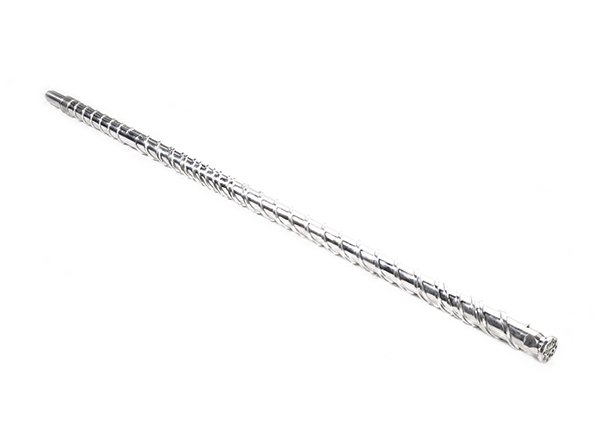+86-0580-8052088
+86-13505800981
No. 20, Liguan Road, Jintang Town, Dinghai District, Zhoushan, Zhejiang, China
The extrusion process of a polymer in a single-screw ex […]
The extrusion process of a polymer in a single-screw extruder can be described by the fundamental functions of each section of the screw and the change in the state of the polymer in the extruder
Feeding section: The feeding section includes a feeding zone, a solid conveying zone and a hysteresis zone. Its basic function is to transport and compact the polymer. After the material enters the extrusion system from the hopper, it is filled in the space between the machine and the screw. Because of the rolling of the screw, the relative movement between the machine and the screw occurs, and then the Mode force occurs between the material and the barrel and between the material and the screw surface. The solid material is transported forward under the induction effect of the above conflicting forces. Because of the sweeping heat and external heating of the barrel, the material starts to melt at the end of the feeding section, and then presents a transition zone, which is called the hysteresis zone. At this moment, the science of biology is basically in a solid state.
Melting section: The function of the melting section is to melt, plasticize and further compact the material, and press the air in the material back to the feed port of the feeding section to discharge it. On the one hand, because of the gradual shallowness of the screw grooves in this section and the resistance constituted by the filter screen, the splitter plate and the machine head, the material gradually forms a high pressure and is further compacted. On the other hand, after entering the melting section, due to the conflicting heat and external heating of the barrel, the temperature of the material continues to rise and becomes a mature fluid state, and a molten film is formed on the inside and outside of the barrel. At the same time, the rotating spiral edge continuously scrapes the molten film off and forms a molten pool in the spiral groove. At this moment, the material is in a state of coexistence of solid and liquid.
Melt conveying section: The function of the melt conveying section is to further mix and plasticize the materials, reach a certain temperature, and squeeze them out of the die with a certain pressure. The materials in this section are all in a molten state.
Generally, the most extensive extrusion theory is based on the above three functional sections, namely the solid transport theory in the feeding section, the melting theory in the melting section (condensing section) and the melt transport theory in the melt transport section (metering section).
https://www.txscrew.com/

Copyright:Zhoushan Tianxiang Screw Factory
China Conical Twin Screws ManufacturersTechnical Support: HWAQ